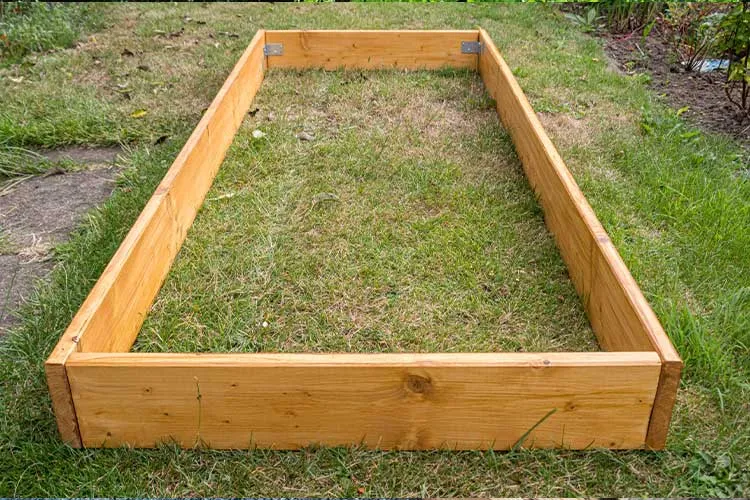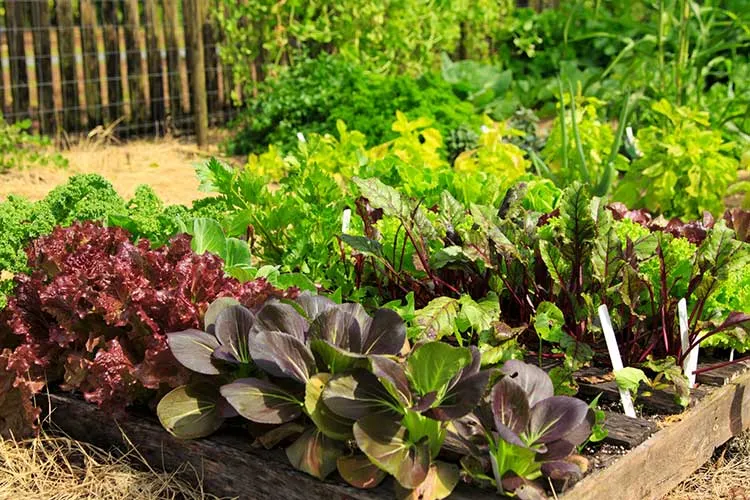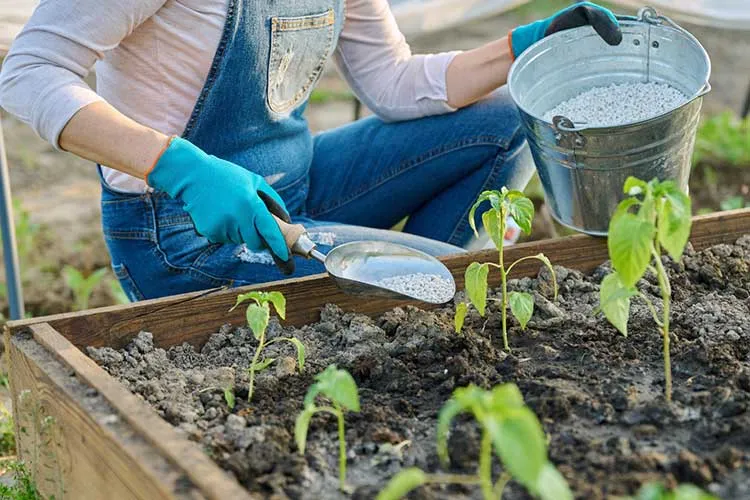Watering your raised bed garden can feel like a balancing act, but mastering it is key to a lush, productive space. Unlike traditional in-ground gardens, raised beds dry out faster, making proper hydration essential. This guide will explore the optimal watering routine—how often to water, why raised beds lose moisture quickly, and how to adapt your methods with the seasons.
We’ll cover practical tips for avoiding overwatering mistakes, choosing the best irrigation system, and advanced techniques like rainwater harvesting. Learn how proper watering can boost your garden’s health, maximize yields, and conserve precious resources!
But what is the best system for watering raised beds? A drip irrigation system is often recommended for efficiently watering raised beds. It delivers water directly to the soil near the roots, minimizing evaporation and runoff. Adjustable emitters or soaker hoses can control flow, making it suitable for various plants and soil types.
Table of Contents
ToggleUnderstanding Watering Needs for Raised Bed Gardens
Proper watering is the foundation for a healthy, productive raised bed garden. Knowing when and how much to water can be challenging, especially as conditions change throughout the growing season. This section will explore how often you should water, why raised beds can dry out faster, and how to adjust your routine accordingly.
How Often Should You Water Your Raised Bed Garden?
Watering frequency can vary greatly based on factors like climate, soil type, and the needs of the plants you’re growing. In general:
- In hot, dry climates, raised beds may need watering daily, especially during peak summer.
- Watering every few days might be sufficient in cooler, more humid areas.
- Sandy soils drain quickly and may require frequent watering, while clay-rich soils retain moisture longer.
Seasonal changes also play a role. During spring and fall, you might need to water less frequently than in summer. Pay attention to your plants’ specific water needs, as some vegetables (like tomatoes) may prefer a drier surface, while others (like leafy greens) benefit from consistent moisture.
Do Raised Garden Beds Dry Out Quickly?
Yes, raised beds often dry out faster than traditional in-ground gardens. The reason is their design: raised beds are typically elevated above the natural soil line, allowing excess water to drain more freely. This makes them excellent for preventing waterlogged roots, but it also means they can lose moisture quicker. Other contributing factors include:
- Increased exposure to wind and sun: Raised beds tend to heat up faster, causing soil moisture to evaporate quickly.
- Well-draining soil mixes: The light, aerated soil typically used in raised beds encourages fast drainage.
To adapt, consider watering more frequently during hot weather or using techniques like mulching to help retain moisture. Keeping a close eye on soil conditions will help you adjust your watering routine to avoid under-watering or over-watering.
By understanding these fundamental watering needs, you’ll be better equipped to maintain the right moisture balance in your raised bed garden. Proper hydration boosts plant health, helps you maximize yields, and conserves water.
Avoiding Common Watering Mistakes
Even experienced gardeners can make watering mistakes that impact plant health. Overwatering is one of the most common errors, leading to root rot and other issues. Here’s how to spot and avoid these pitfalls in your raised bed garden.

Can You Overwater a Raised Bed?
Overwatering is a real risk in raised bed gardening. When plants receive too much water, their roots can’t access the oxygen they need, leading to poor growth or even plant death. Some signs of overwatering include:
- Yellowing leaves may wilt despite regular watering.
- Mushy or soft stems are a sign of root rot.
- Consistently damp soil, even days after watering.
Overwatering can also harm the soil structure. Too much moisture compacts the soil, squeezing out air pockets and making it difficult for roots to access oxygen. This can be particularly problematic in raised beds, where soil mixes are chosen for their good drainage. The best way to avoid overwatering is to check soil moisture regularly before watering.
How Do I Know if My Vegetables Are Getting Too Much Water?
Vegetable plants, especially sensitive ones like tomatoes, peppers, and squash, can show specific symptoms of overwatering. These signs include:
- Yellowed leaves have a limp appearance, suggesting stress from waterlogged roots.
- Blister-like bumps or swelling on stems.
- Browning leaf edges can be confused with nutrient deficiencies.
Water stress and nutrient deficiencies can look similar, so digging a little deeper is essential. If the soil is consistently wet, it’s likely due to water stress. You might need to explore soil nutrition if it’s dry and still showing symptoms.
Recognizing these signs early can help you adjust your watering habits and save your garden from overwatering damage. Remember, it’s always better to go underwater slightly and correct it with more water than to drench plants already struggling. Proper moisture management is key to avoiding these common pitfalls.
Proper Water Management Techniques
Watering isn’t just about how often you water but also how well you manage and distribute that water. Let’s look at a few effective strategies to hydrate your raised bed garden.
Should You Waterproof a Raised Garden Bed?
Some gardeners opt to waterproof the interior of their raised beds, especially if they are built with materials like untreated wood that might degrade over time. While waterproofing can extend the life of your raised bed, it’s not always necessary. Consider the pros and cons:
Pros:
- Prevents moisture damage to wooden raised beds.
- It helps control drainage and retains more water for your plants.
Cons:
- Limits natural drainage if overdone.
- Some waterproofing materials may not be environmentally friendly.
If you decide to waterproof, use natural materials like burlap liners or geotextiles that allow some water flow while protecting the wood. Avoid plastic liners unless they have adequate drainage holes.
Does Mulching Help with Watering?
Mulching is one of the most effective ways to conserve water in a raised bed. It minimizes evaporation, regulates soil temperature, and prevents weed growth that can compete for water. Here’s how to get the most out of your mulch:
- Choose organic materials like straw, shredded leaves, or compost, which break down over time and improve soil health.
- Apply a layer of 2-3 inches of mulch around your plants, making sure not to crowd the base of the stems.
- Refresh the mulch layer as it decomposes to maintain its water-saving benefits.
Mulching can significantly reduce the need for frequent watering, especially during the hottest months of the year. It’s a small step with big results for water management.
Practical Watering Tips and Timing
Knowing when and how to water can save you time, effort, and water. Here are some practical tips to optimize your watering schedule.
What Is the Best Time to Water the Plants?
The best time to water your raised bed garden is either early morning or late evening. Here’s why:
- Early morning watering lets plants absorb moisture before heat, reducing evaporation.
- Evening watering can be effective too, though it may leave foliage wet overnight, which can sometimes encourage fungal growth. Be cautious and try to avoid getting leaves too wet in the evening.
Avoid watering during the hottest part of the day, when water quickly evaporates, wasting resources and causing thirsty plants.
How Do You Test the Moisture Content of Soil?
Testing soil moisture helps ensure you’re not watering too little or too much. Here are some quick and easy methods to check if your soil needs water:
- Use the finger test: Stick your finger about 2 inches into the soil. If it feels dry at that depth, it’s time to water.
- Try a wooden dowel or skewer: Insert it into the soil and pull it out. If it comes out clean, the soil is dry; if it’s damp, you can hold off on watering.
- Consider a soil moisture meter, a handy gadget that can instantly give you an accurate reading of soil moisture levels.
Choosing the Best Irrigation Methods
The right irrigation method can greatly improve the success of your raised bed garden. Each option has benefits and drawbacks, from simple hand-watering to sophisticated drip systems.
What Method of Irrigation Is Best for Your Garden?
Different irrigation methods suit different gardening styles and needs. Here’s a quick comparison of the main options:
- Hand-watering is ideal for small raised beds where you can give individual attention to plants. It’s flexible but can be time-consuming.
- Drip Irrigation: A water-efficient method that slowly delivers water directly to the soil. Great for water conservation, but installation can be a bit more complex.
- Soaker Hoses: These provide a steady water flow along the entire length, ideal for rows of plants in raised beds. They’re simple to set up, though they may not always distribute water evenly.
What Is the Best System for Watering Raised Beds?
Consider automatic watering systems if you’re looking for a more advanced solution. These include timers and sensors that take the guesswork out of watering. Some popular choices for raised bed gardens are:
- Drip irrigation kits with timers to control watering frequency.
- Soaker hoses are attached to an automated timer for a low-maintenance setup.
- Smart irrigation controllers that monitor weather patterns and adjust watering schedules accordingly.
For maintenance, regularly check the irrigation lines for leaks or clogs and ensure that emitters are properly positioned for even water coverage.
Troubleshooting Watering Problems
Watering issues can still arise in a raised bed garden even with the best intentions. Whether dealing with soggy soil or rescuing struggling plants, here are some solutions for common watering problems.
How Do You Fix an Overwatered Raised Bed?
An overwatered raised bed can lead to root rot, fungal diseases, and poor plant health, but it’s not always a lost cause. Follow these steps to recover your garden:
- Stop watering: Give the soil a chance to dry out by pausing your regular watering schedule.
- Improve Drainage: If your raised bed doesn’t have adequate drainage, consider adding more drainage holes or adjusting the soil mix with coarse materials like perlite or sand.
- Aerate the Soil: Use a garden fork or small trowel to gently loosen the top layer of soil, helping air reach the root zone and encouraging quicker drying.
- Remove Affected Plants: If you notice any severely damaged plants, remove them to prevent diseases from spreading.
Overwatering can often be corrected by improving drainage and adopting a more conservative watering approach. Remember, less is more when it comes to fixing an overwatered garden.
Advanced Tips for Efficient Watering
For those looking to go beyond the basics, a few advanced techniques can greatly affect how efficiently you water your raised bed garden. These methods are designed to save water, conserve resources, and make gardening more sustainable.
Using Water-Retaining Gels and Additives in Soil
Water-retaining gels and additives can help keep soil moist longer, especially during hot, dry periods. These are often small crystals or beads that absorb water and slowly release it into the soil. Use these gels:
- Mix them into the soil at planting time to create a more moisture-retentive environment.
- In very sandy soils, where water drains quickly, an added measure to help reduce watering frequency is to
Integrating Rainwater Harvesting Systems for Sustainability
If you’re looking for a sustainable watering solution, consider using rainwater harvesting. Collecting rainwater reduces your reliance on municipal water and provides a natural, pH-balanced water source for your garden. Here are a few tips:
- Set up a rain barrel to collect runoff from your roof. Connect the barrel to a hose or watering can for easy access.
- Install a drip irrigation system that connects to your rain barrel, making it possible to automate the use of harvested rainwater.
- Use rainwater primarily for watering the soil and avoid spraying it on foliage to prevent any potential contaminants from impacting plant health.
Monitoring Weather Patterns to Adjust Watering Frequency
Paying attention to local weather patterns can help you fine-tune your watering routine:
- Use a weather app or garden-specific weather station to track rainfall and temperature trends.
- Reduce watering during rainy periods and increase it during heat waves.
- For raised beds with advanced irrigation systems, consider integrating smart controllers that automatically adjust watering based on weather data.
Conclusion
Proper watering is essential for maintaining a healthy and productive raised bed garden. Key takeaways include:
- Adjust watering frequency based on climate, soil type, and plant needs, especially as seasons change.
- Recognize the signs of overwatering and underwatering to avoid common mistakes.
- Utilize effective techniques like mulching and choosing the right irrigation method for your setup.
- Don’t hesitate to explore advanced methods like water-retaining gels, rainwater harvesting, and smart irrigation systems to conserve water and keep your garden thriving.







